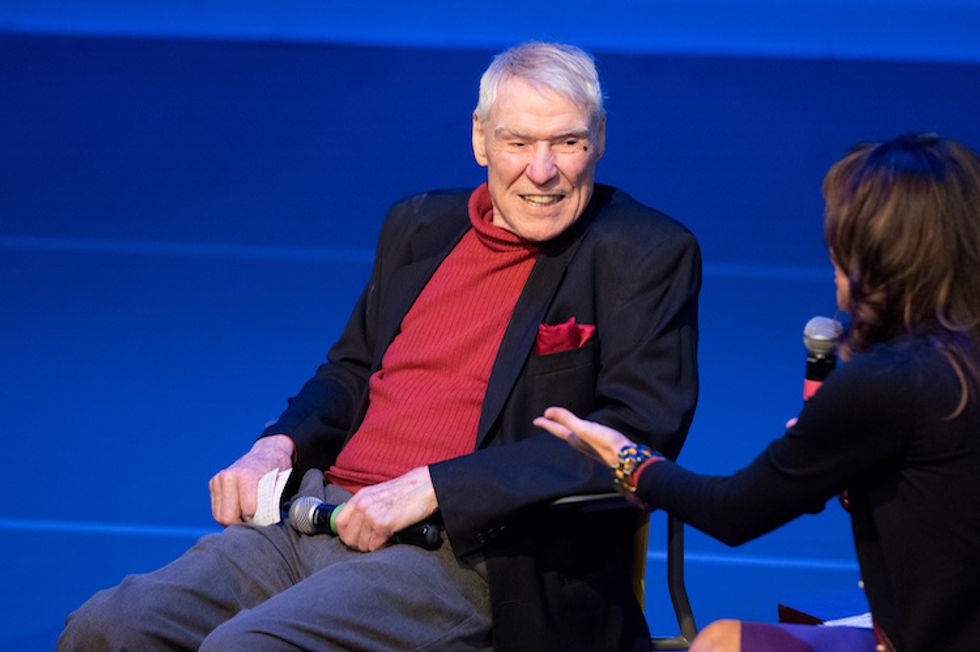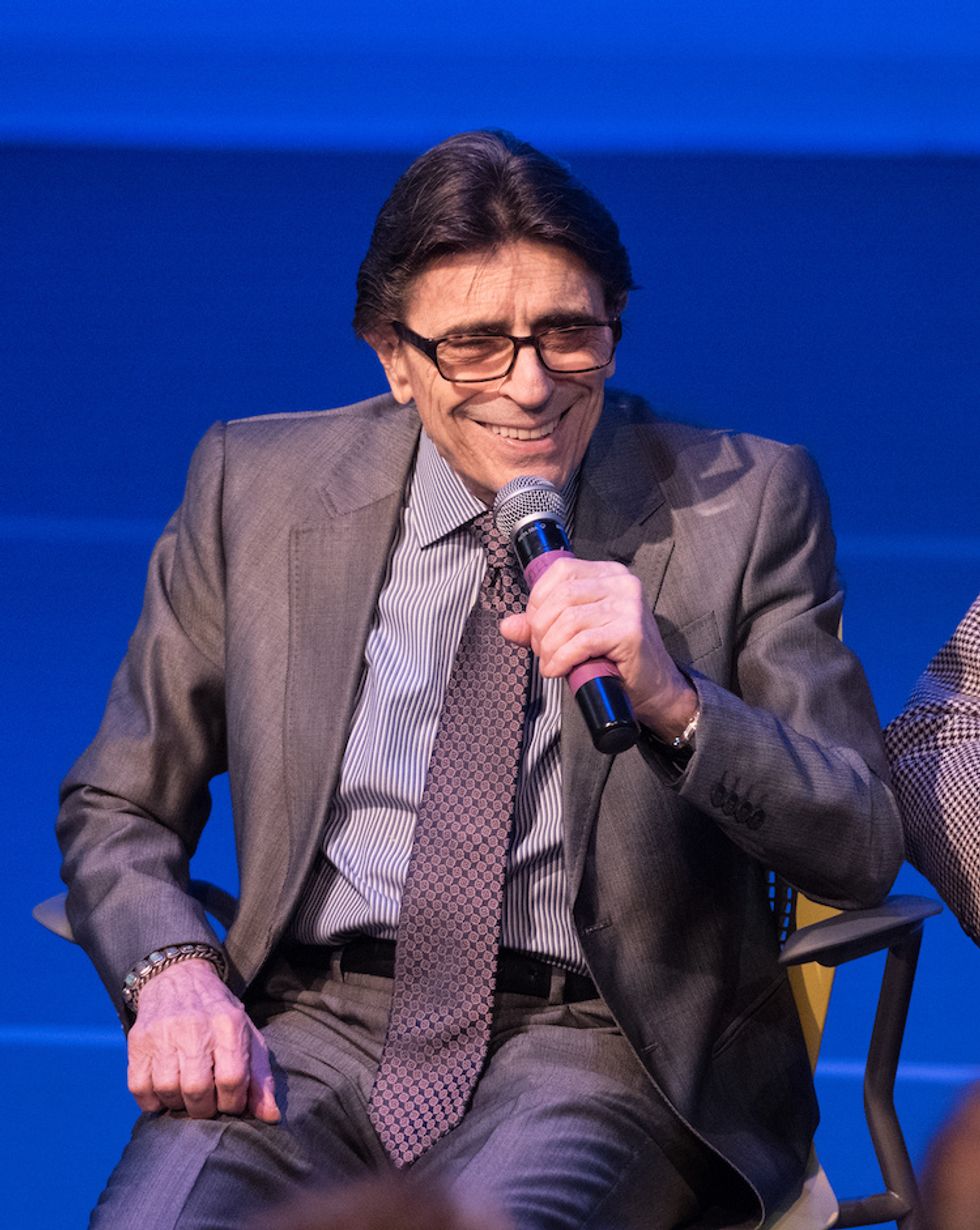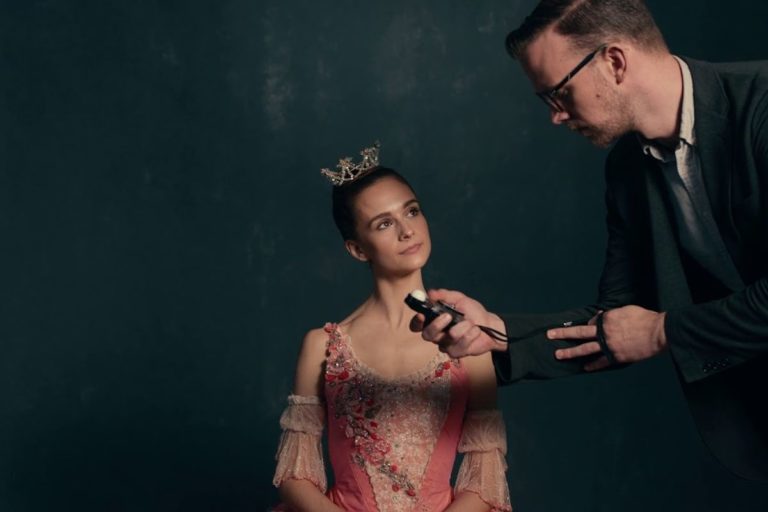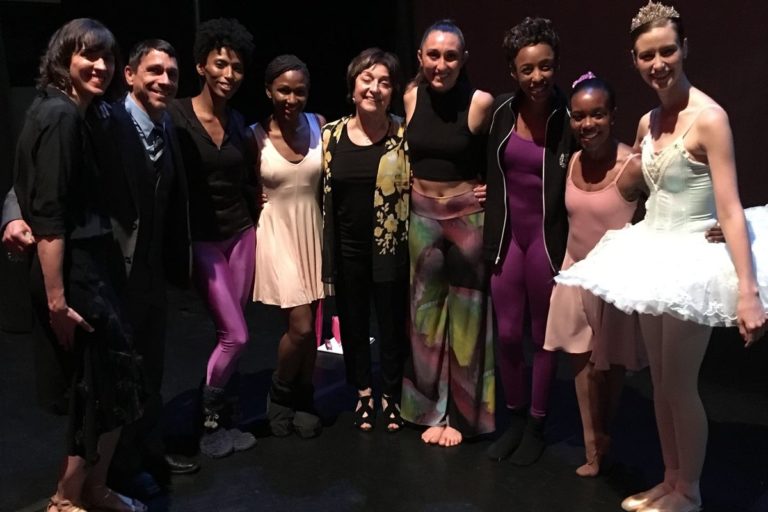
After 50 years, George Balanchine’s New York City Ballet male dancers—Jacques d’Amboise, Edward Villella and Arthur Mitchell—were reunited. The one-night-only event at the National Dance Institute in New York City (founded by d’Amboise in 1976) provided a rare glimpse of what it was like to work with Mr. B. during ballet’s golden years at NYCB.
The three men, all in their early 80s, discussed everything from their ballet beginnings: Villella being dragged with his sister to class, to dancing with “Balanchine’s gals” (as d’Amboise referred to them), several of whom were in attendance, including Patricia McBride and Suki Schorer. Sprinkled throughout the discussion was video footage of the three men performing memorable roles choreographed by Balanchine. Current NYCB members Joaquin de Luz, Sterling Hyltin, Adrian Danchig-Waring, Teresa Reichlen, Daniel Ulbricht and Ask La Cour Rasmussen also performed live excerpts from Prodigal Son, Agon, Apollo and Tarantella.
From the trio’s perspective, it was clear that not only did Balanchine teach his iconic style and choreography to his NYCB dancers, he passed along life lessons that transcended dance.
Always Be a Gentleman
Each described how Balanchine’s good manners and elegance—in all settings, not just the classroom—rubbed off on them as young men. “Balanchine epitomizes the king on the throne who was also modest,” said d’Amboise. If he was sitting at a dining- room table, and you walked by him, d’Amboise went on to tell, he would stand up and greet you. “He was always a gentleman,” said Mitchell. “He was all about elegance and the simplicity of things,” added Villella.

d’Amboise. Photo by Noam Galai/Getty Images
Your Fellow Dancers and Teachers Are Your Family
As one can imagine, fierce competition could put a schism between the men vying for Mr. B.’s attention. But they claimed to be true friends from the beginning. “He was like our surrogate dad, in a way,” said Mitchell of Balanchine. They joked about their time as teenagers at the School of American Ballet, d’Amboise frequently causing Villella to miss his train back to Bayside, Queens. “You were big, but I was fast,” said Villella to d’Amboise. After all these years, they still remain close. “We support each other. We like each other. There’s no ego involved in that sense,” said Mitchell, who could have easily been treated as an outsider.
Mitchell joined NYCB in 1955 and became the first African-American principal in the company, and later founded Dance Theatre of Harlem. When NYCB toured in the South before the 1964 Civil Rights Act abolished segregation, Mitchell wasn’t received warmly. He had to stay at a separate hotel. During one performance, the stagehand refused to open the curtain because Mitchell was onstage with a white woman (Diana Adams), and the follow-spot operator wouldn’t shine the light on him. Despite the adversity he experienced, Mitchell felt fully supported by his ballet family, including Balanchine.

Mitchell. Photo by Noam Galai/Getty Images
There’s Nothing Like Dance Training
“It was hard work,” said Villella. He described their tour schedule as starting early in the morning with company class, followed by rehearsal, the preparation for the performance and then the actual performance. Villella boxed for three years, yet he endured more pain and injury from being a dancer. Over the years, he’s endured nine broken toes, stress fractures in both of his legs and arthritis, but he said he wouldn’t change a thing about his career as a ballet dancer.
Villella came to NYCB not knowing much, but studying with Balanchine and learning the discipline of ballet altered him. “It did something to me as a human being,” he said.
Balanchine rarely spoke, but no matter how difficult a step or concept was, he had a way of conveying what he wanted. Villella said that when Balanchine came into rehearsal, his feet would start to move and that was it. “He showed you everything with his body,” said Villella.

Villella. Photo by Noam Galai/Getty Images
Get Rid of What’s Not Necessary
Villella recalled a conversation he had with Mr. B. when he was choreographing Apollo. Balanchine confessed to Villella that it was the first time he realized he had more material than he needed. Most choreographers are desperate to find the right steps or inspiration. Part of Balanchine’s genius was using what worked and letting go of what didn’t, said Villella. “I doubt if he ever prepared a step,” he added. “It was all in his head.”




